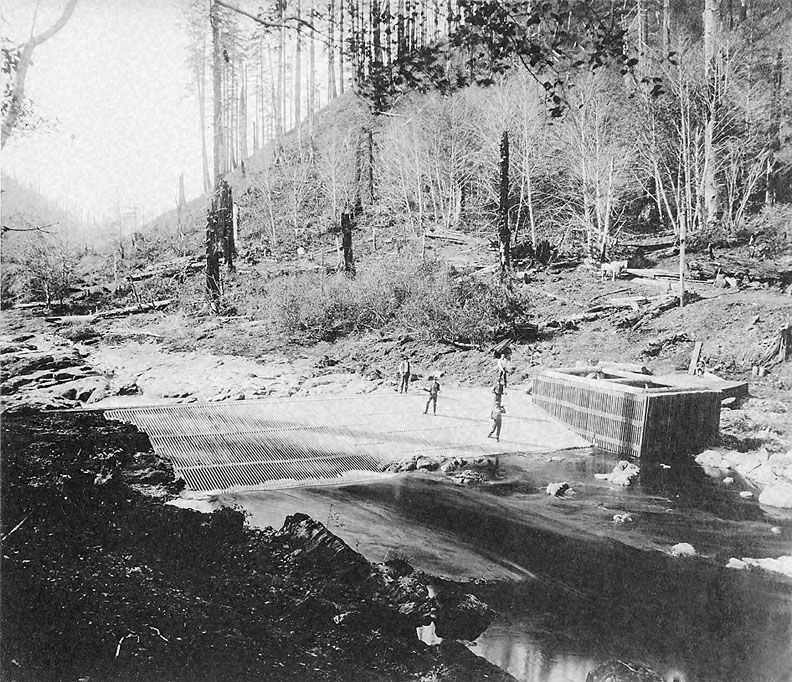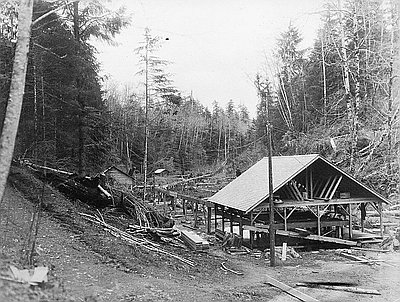- Catalog No. —
- CN 002633
- Date —
- c. 1914
- Era —
- 1881-1920 (Industrialization and Progressive Reform)
- Themes —
- Environment and Natural Resources, Trade, Business, Industry, and the Economy
- Credits —
- Oregon Historical Society
- Regions —
- Coast Northwest
- Author —
- Columbia Studios Collection
Fish-Catching Cage, Trask River
This fish collecting cage and rack, was built across the Trask River in Tillamook County, Oregon in 1914, as part of a state fish hatchery project.
Non-Indians began mass processing salmon on the Columbia River with the construction of the river’s first cannery in 1866. Within a decade Oregon and Washington lawmakers were confronted with the difficulties of regulating a commercial fishing industry that operated in waters shared by two states. In the twentieth century, lawmakers were increasingly troubled by the problems of regulating salmon harvests that reached beyond the Columbia River itself, into Canadian and international waters.
The artificial propagation of salmon through hatcheries offered fishery managers, politicians, and commercial fishers an alternative to enforced regulations, and the promise of increased fish harvests. Oregon’s first hatchery was built along the Clackamas River in 1877. Trumpeted by unsubstantiated claims of success, they became very popular and proliferated throughout the tributaries feeding the lower Columbia River and the rivers and streams along the Oregon and Washington coasts.
In order to artificially propagate salmon, the eggs and sperm first needed to be harvested from live fish. Large wooden weirs, or “racks,” shown at the center of the photo, were constructed across rivers and streams to impede the upstream migration of spawning adults. An opening in the rack led salmon into a cage, sometimes called a “fish box,” shown at the far right of the rack, where they waited until their sperm and eggs were physically removed by hatchery staff. The fish were typically discarded, and their eggs and sperm were transported to a hatchery where workers would manually fertilize the eggs and rear the young fish until their release back into the river system.

